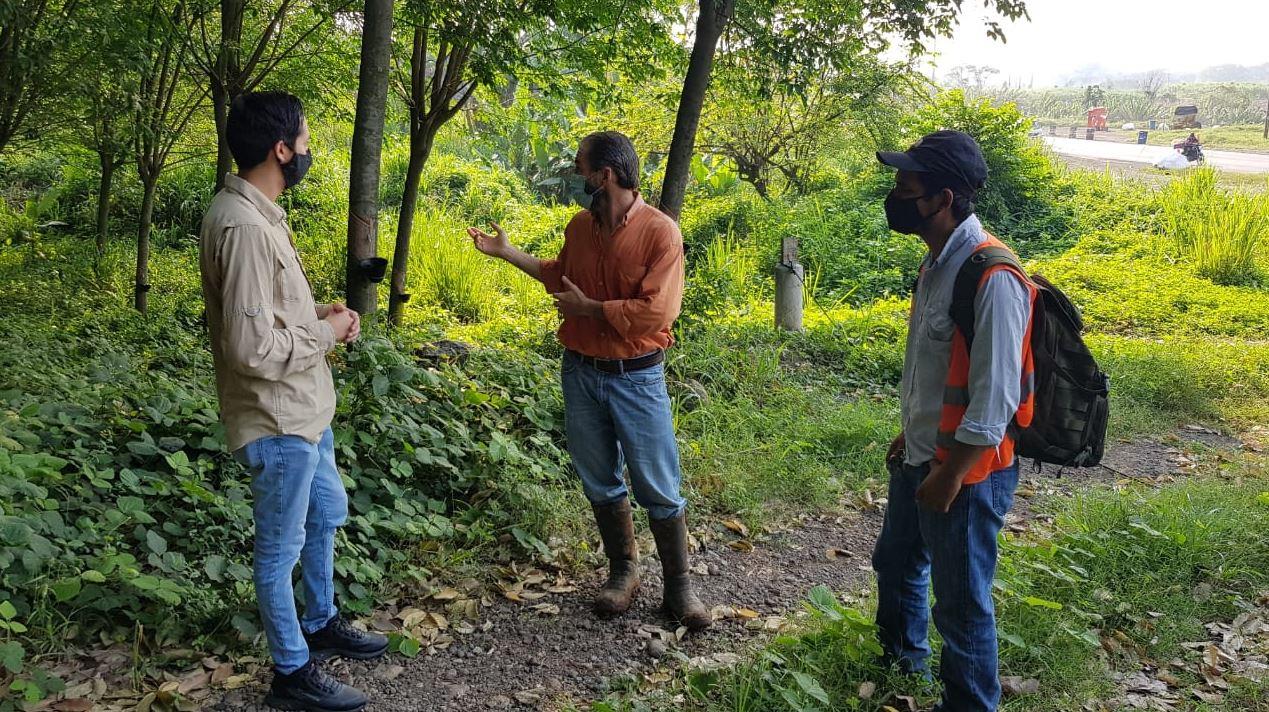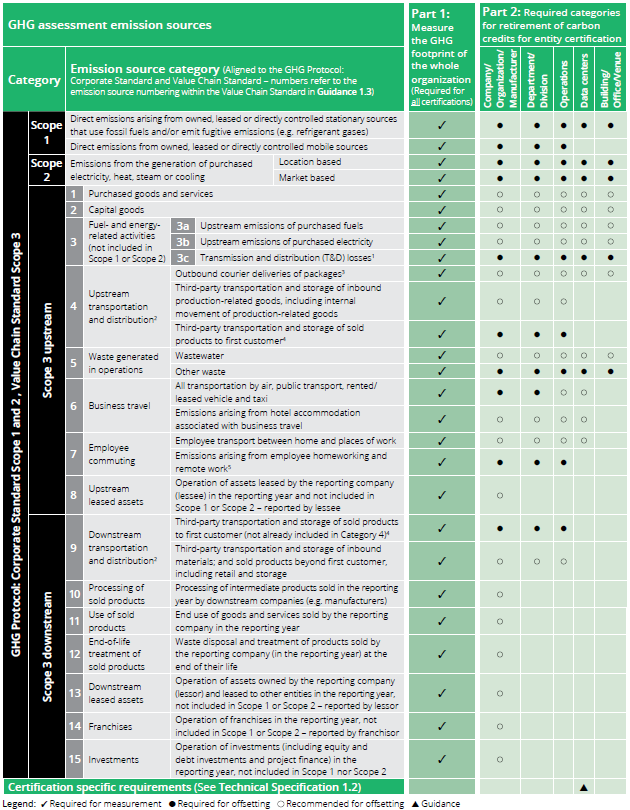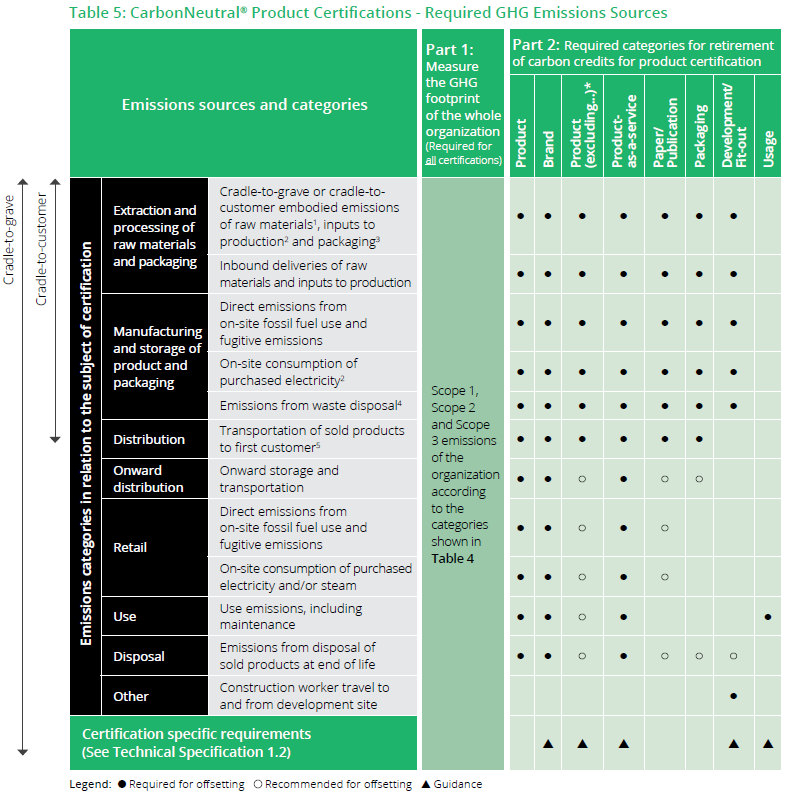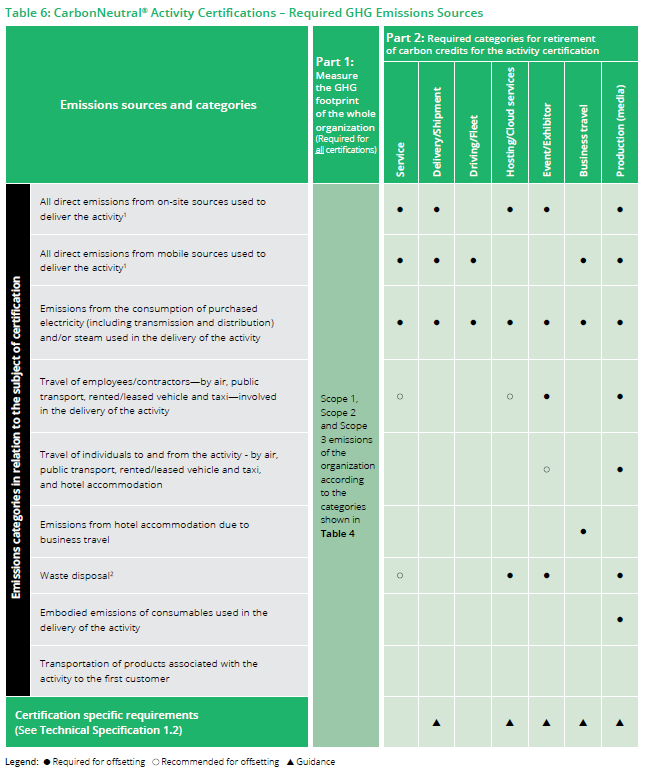The certifications are grouped into three classes, as shown in Table 3 below.

Image: Sustainable Rubber Tree Reforestation, Guatemala: This nature-based carbon removal project plants rubber trees in Guatemala for the sustainable harvesting of their sap, drawing down carbon as the plantations grow

*See Technical Specification 1.2.
**Products or packaging may only carry a CarbonNeutral® product or CarbonNeutral® packaging logo respectively.

1 T&D losses must be included where relevant emissions factors are available (e.g. UK based assessments based upon DEFRA emissions factors). Where EACs are used to manage Scope 2 emissions, EACs do not address Scope 3 T&D losses. T&D losses may be offset using carbon credits or EACs.
2 Upstream transportation and distribution relates to transportation and distribution services purchased by the reporting company, that are not included in Scope 1 or 2. Downstream transportation and distribution relates to transportation and distribution which is not purchased by the reporting company. This is intended to capture significant emissions from transportation and storage of production-related goods and final products manufactured and/or sold by the reporting entity. Where there are transportation and distribution emissions relating to a third-party site, e.g., a third-party warehouse, this must include Scope 1 and Scope 2 emissions of that site. Where assessors identify further emission sources that are material according to their professional judgment, these must also be calculated and included.
3 Excludes letters sent by general mail servicesuppliers.
4 This is only a required source of emissions for product manufacturers and for companies whose primary business is distribution of products manufactured by other entities. This does not include emissions from the day-to-day movement of non-core business consumables.
5 This is intended to capture the additional emissions not included in Scope 1 and 2 that result from facilities outside of a company’s control, either permanently or temporarily, on top of a baseline scenario that would occur regardless of whether the employee was at home.

The boundary for product-type certifications must be consistent with the definition of the subject. For cradle-to-customer subjects, the boundary must extend from cradle to the point at which the client applying for certification is no longer the owner or purchaser of the transportation/storage service. If using an Environmental Product Declaration (EPD) which meets the requirements specified in Guidance 2.9, the emission sources required for the EPD shall prevail over the emissions sources specified above. For further information regarding appropriate boundaries for cradle-to-customer certifications, see Guidance 1.4. For cradle-to-grave subjects, the boundary must extend to end-of-life disposal.
* For those applying for a Product (excluding)... certification, the measurement of the subject can exclude any of the relevant categories marked as ‘recommended’, but all excluded categories must be defined in the certification name and logo in claims. See Guidance 1.2 for more information.
1 Land use change (LUC) emissions are required for those product certifications that have a significant impact on LUC associated with forest, land, and agriculture (FLAG) supply chains. For agricultural and commodity supply chains, LUC emissions can be excluded if a sufficient farm-level certification was in place (e.g. Rainforest Alliance, UTZ). The CarbonNeutral Protocol accepts the guidance set out by Quantis (See Recommendation 9, Quantis, 2019, Accounting for natural climate solutions https://quantis-intl.com/report/accounting-for-natural-climate-solutions-guidance).
2 Although we encourage clients to offset the wider scope of emissions, T&D losses are not a required emissions source in a product-type certification.
3 Primary packaging must be included and secondary and tertiary is recommended. Any packaging that carries information about the brand and product, and which is included with the product when it is bought by the final customer is primary – all other packaging is secondary (e.g. for delivery to retailer or tertiary (e.g. for long-distance distribution)).
4 Where data is available, it is recommended that emissions arising from water consumption and also wastewater treatment are included within these categories.
5 Where emissions from transportation and storage are included, this must be accounted for until the first customer receives the product, regardless of which
party is responsible for the associated expense.

1 Inclusion of upstream emissions of purchase fuel is recommended.
2 Where data is available, it is recommended that emissions arising from wastewater treatment are included within this category.